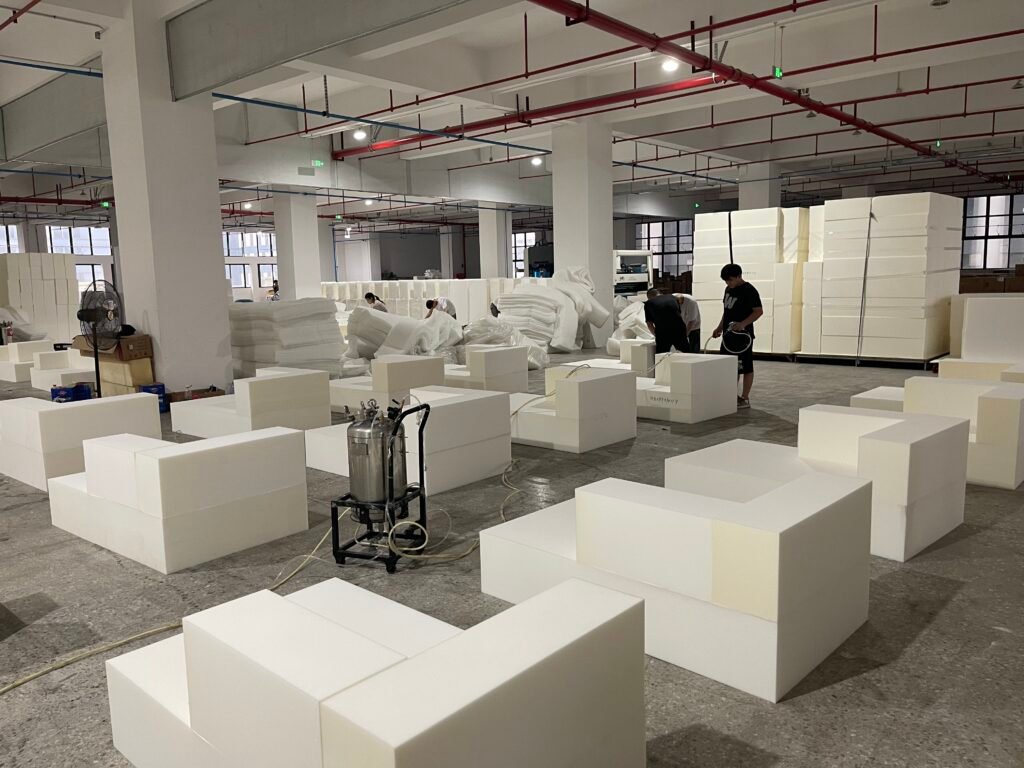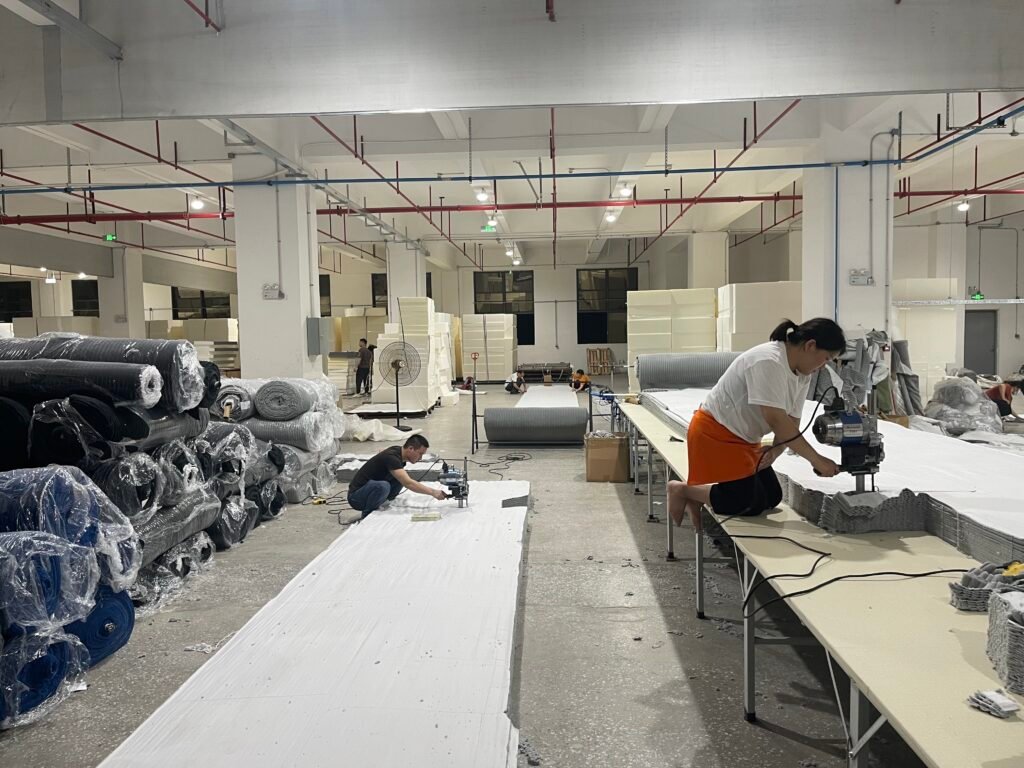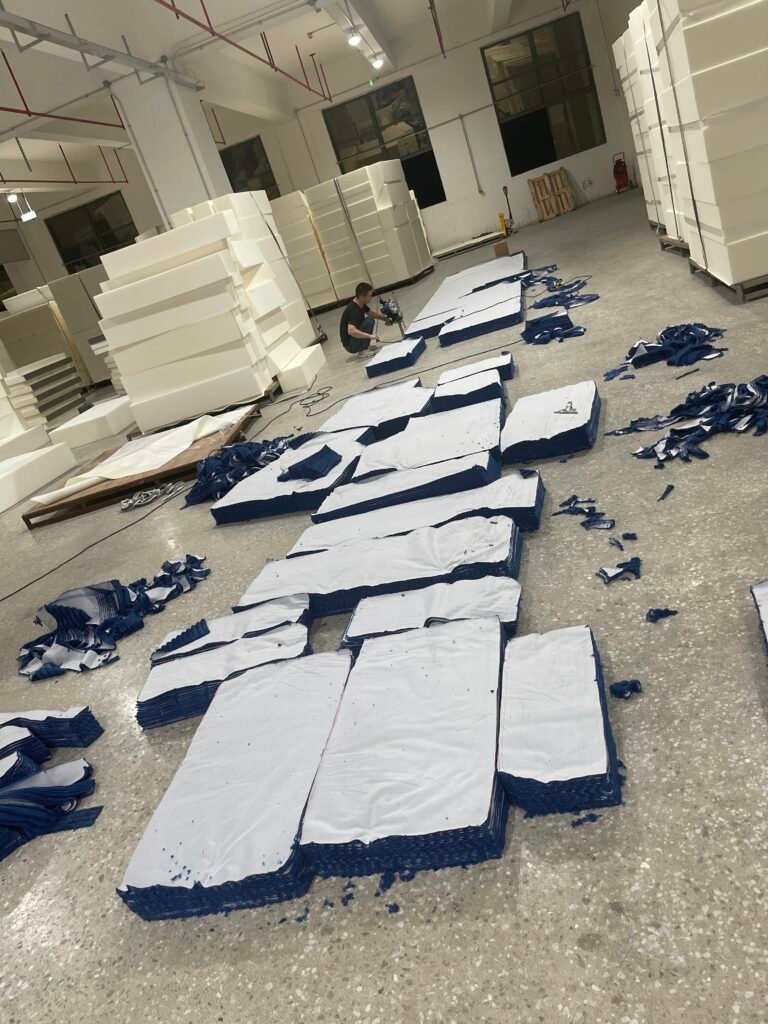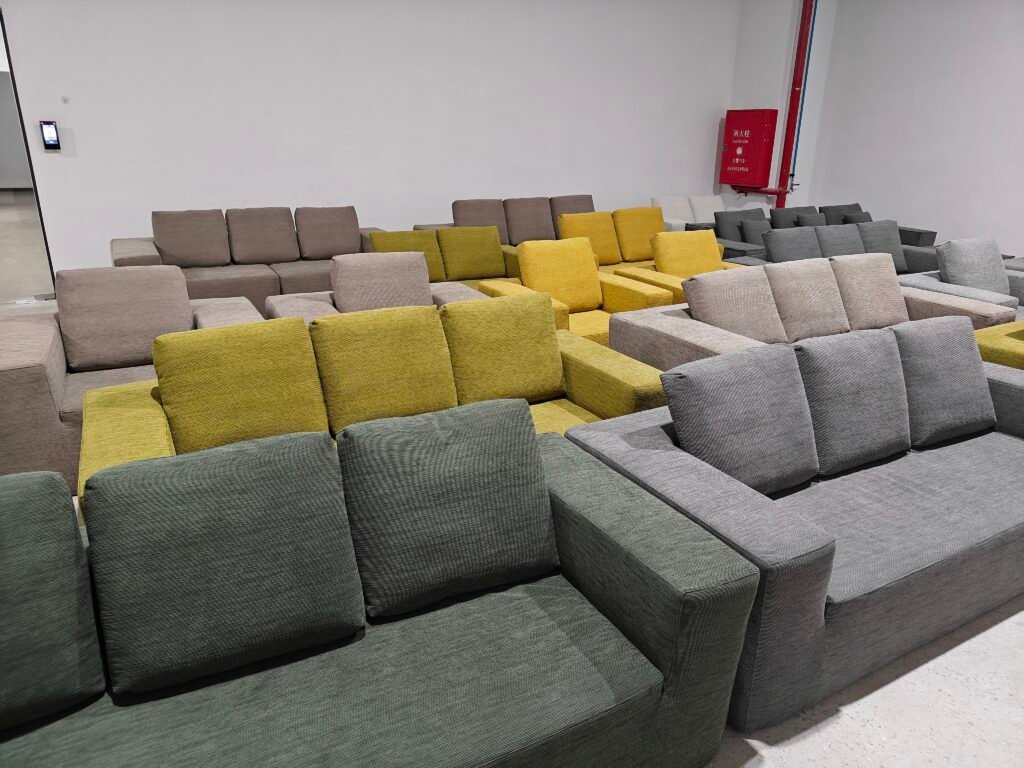Introduction
In the modern furniture industry, compress sofas have revolutionized the way sofas are manufactured, packaged, and delivered. Designed for space efficiency and ease of transport, compress sofas are particularly popular among B2B stakeholders such as manufacturers, wholesalers, distributors, and retailers. Understanding the detailed manufacturing process helps these businesses optimize production, ensure quality, and meet market demands effectively. This guide walks you through the step-by-step process of how a compress sofa is made, highlighting key materials, technologies, and quality control measures in 2024.
Step 1: Raw Material Selection
The manufacturing of a compress sofa begins with the careful selection of raw materials. High-quality materials are essential to ensure durability, comfort, and compressibility. Common materials include:
- Frame Materials: Solid wood, engineered wood, or metal frames are chosen for strength and stability.
- Cushioning: High-density foam combined with pocket springs or sinuous springs to provide ergonomic support and resilience.
- Upholstery Fabrics: Environmentally friendly polyester blends, leather, or synthetic fabrics that can withstand compression without damage.
For B2B buyers, sourcing sustainable and certified raw materials is increasingly important to align with corporate social responsibility goals.


Step 2: Cutting and Preparing Components
Once raw materials are sourced, the fabric and foam are cut precisely according to design specifications using automated cutting machines. This ensures consistency and reduces material waste.
The frame components are shaped and assembled using advanced woodworking or metal fabrication techniques. Reinforced joints and modular designs are incorporated to facilitate compression and reassembly.
Step 3: Cushion and Upholstery Assembly
Cushions are fabricated by layering foam and integrating spring systems such as pocket springs, which enhance comfort and durability. The upholstery covers are sewn and fitted over the cushions with precision to maintain shape during compression.
This step involves skilled craftsmanship combined with automated sewing technology to ensure uniformity and quality, critical for bulk B2B orders.


Step 4: Sofa Assembly and Quality Checks
The frame, cushions, and upholstery are assembled into a complete sofa. Each sofa undergoes rigorous quality control checks, including:
- Structural integrity tests on the frame.
- Compression and rebound tests on cushions.
- Visual inspection of upholstery for defects or inconsistencies.
Quality assurance is vital for B2B clients to minimize returns and maintain brand reputation.
Step 5: Vacuum Compression and Rolling
The assembled sofa is then vacuum compressed using industrial vacuum packaging machines. Air is extracted to reduce the sofa’s volume dramatically, typically by up to 90%. The compressed sofa is then mechanically rolled or folded into a compact shape.
This process requires specialized equipment and expertise to avoid damage to springs and upholstery, ensuring the sofa expands correctly upon unpacking.
Step 6: Packaging and Labeling
The compressed and rolled sofa is placed into custom-sized corrugated cartons designed for protection and efficient stacking during transport. Packaging includes:
- Protective foam inserts or air pillows to prevent damage.
- Clear labeling with product information, handling instructions, and B2B order codes.
- Tamper-evident seals to assure authenticity.
Sustainable packaging materials are increasingly used to meet environmental standards demanded by B2B customers.


Step 7: Logistics and Shipping Preparation
Finally, the packaged compress sofas are palletized and prepared for shipment. The compact packaging allows for more units per container, reducing freight costs and storage space—a significant advantage for wholesalers and distributors.
Logistics teams coordinate delivery schedules and tracking, often integrating smart packaging technologies like QR codes or RFID tags for inventory management.


Quality Control and Sustainability Considerations
Throughout the manufacturing process, continuous quality monitoring ensures that compress sofas meet international standards for durability, comfort, and safety. Many manufacturers implement eco-friendly practices such as using recyclable materials, reducing waste, and optimizing energy consumption during production.
For B2B clients, partnering with manufacturers who prioritize sustainability and quality control can enhance brand reputation and meet increasingly stringent market regulations.
Conclusion
The production of a compress sofa is a complex, multi-step process that combines traditional craftsmanship with advanced technology and innovative packaging solutions. For B2B stakeholders in the furniture industry, understanding this process is crucial for selecting reliable suppliers, optimizing supply chains, and delivering high-quality products to the market. As demand for space-saving, cost-effective furniture grows in 2024, compress sofas will continue to play a pivotal role in transforming furniture manufacturing and distribution worldwide.